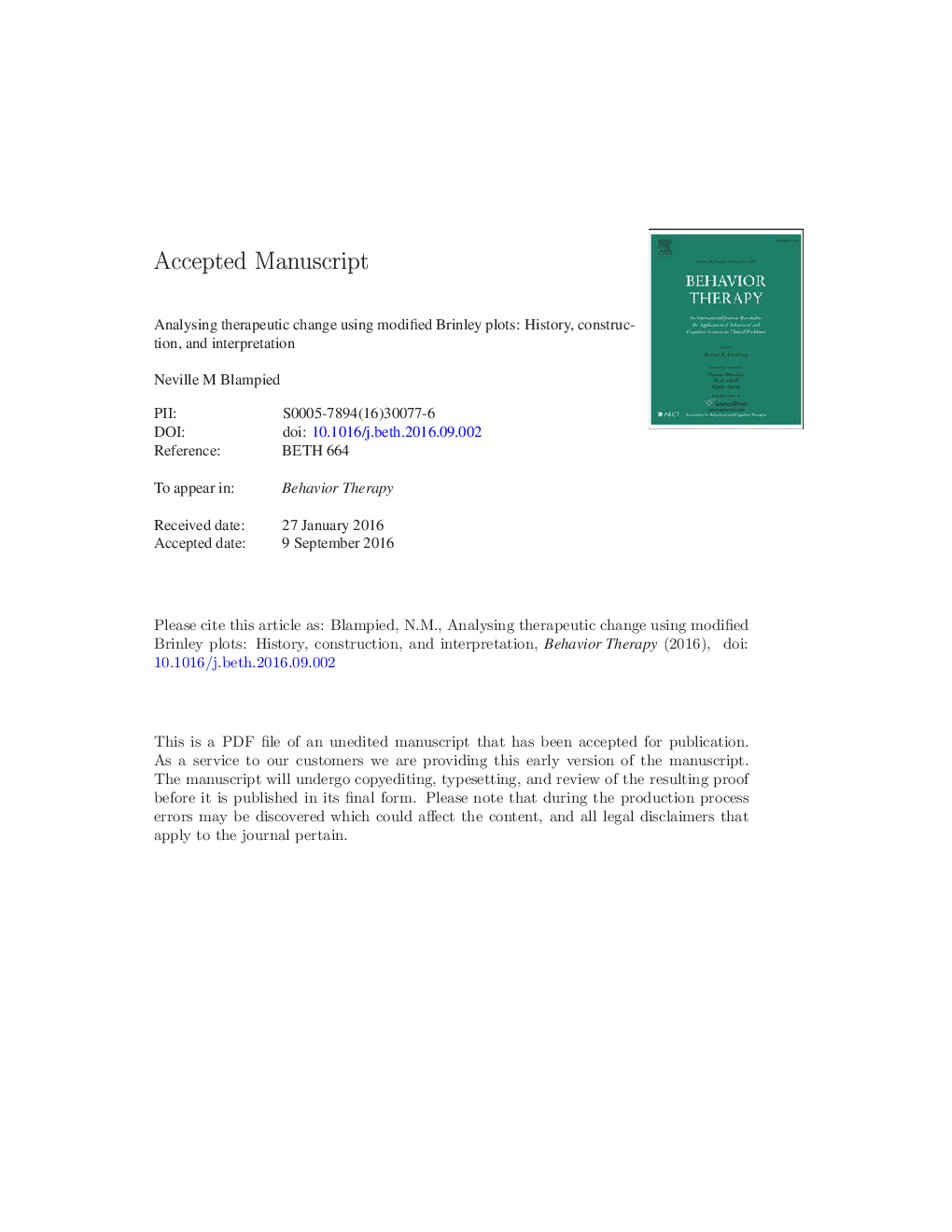ترجمه فارسی عنوان مقاله
تجزیه و تحلیل تغییرات درمانی با استفاده از نقشه های برینلی اصلاح شده: تاریخ، ساخت و تفسیر
عنوان انگلیسی
Analyzing Therapeutic Change Using Modified Brinley Plots: History, Construction, and Interpretation
| کد مقاله | سال انتشار | تعداد صفحات مقاله انگلیسی |
|---|---|---|
| 155333 | 2017 | 42 صفحه PDF |
منبع

Publisher : Elsevier - Science Direct (الزویر - ساینس دایرکت)
Journal : Behavior Therapy, Volume 48, Issue 1, January 2017, Pages 115-127
ترجمه کلمات کلیدی
طرح برنلی اصلاح شده، نتیجه درمان، اندازه اثر، تغییر قابل اعتماد،
کلمات کلیدی انگلیسی
modified Brinley plot; therapy outcome; effect size; reliable change;

